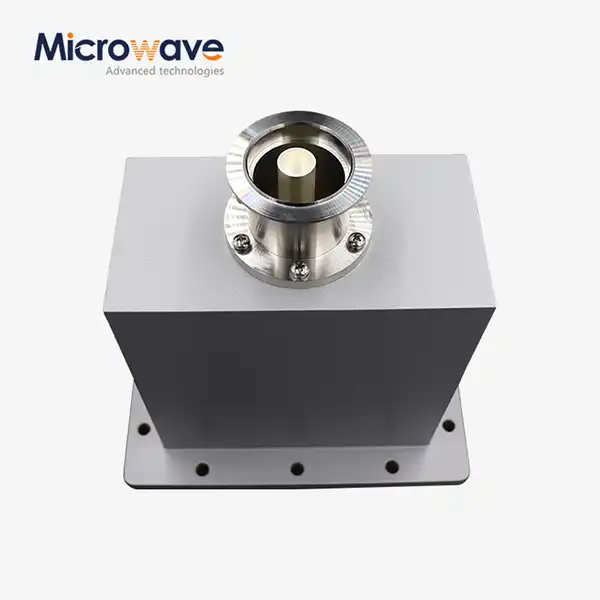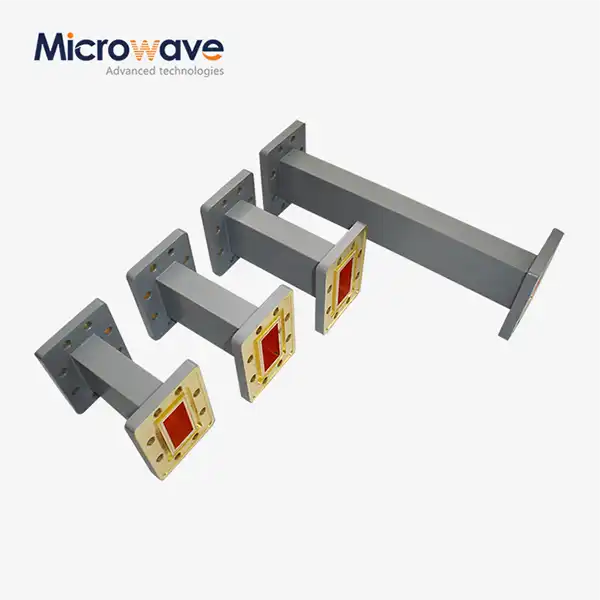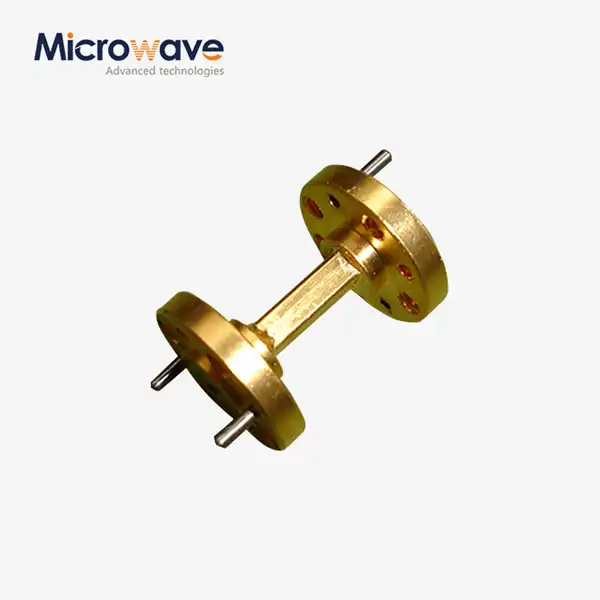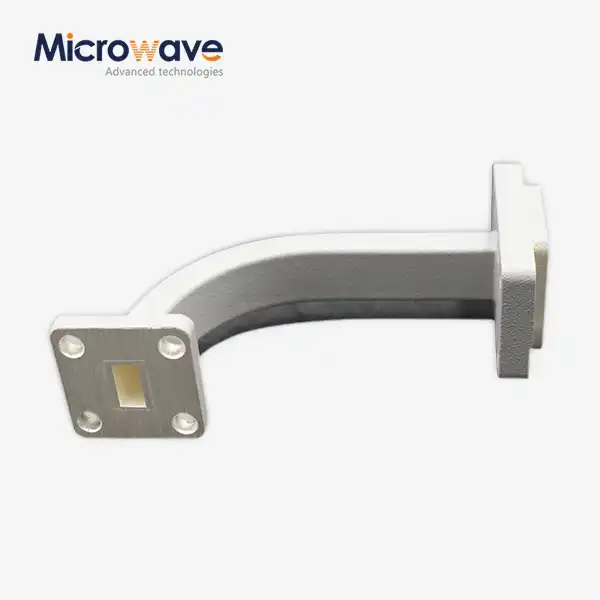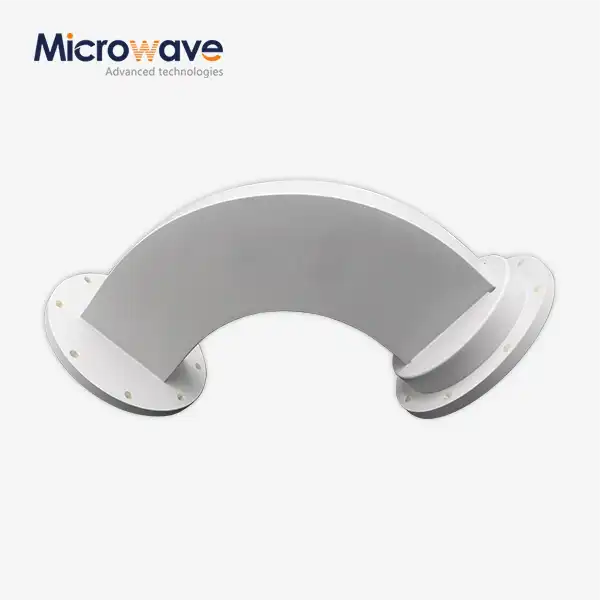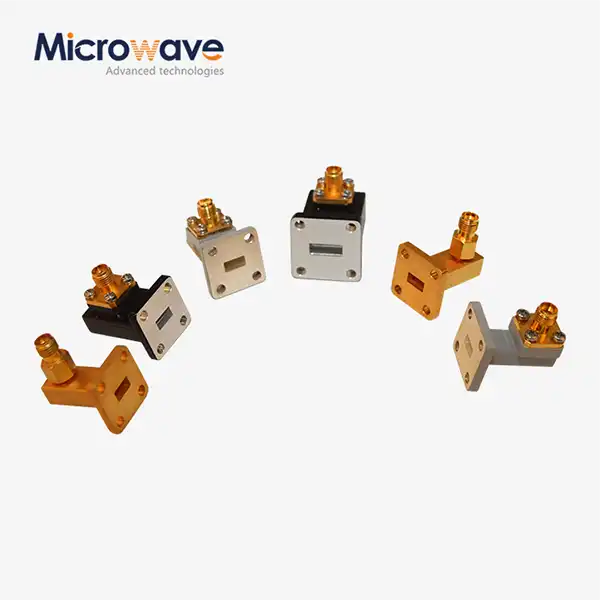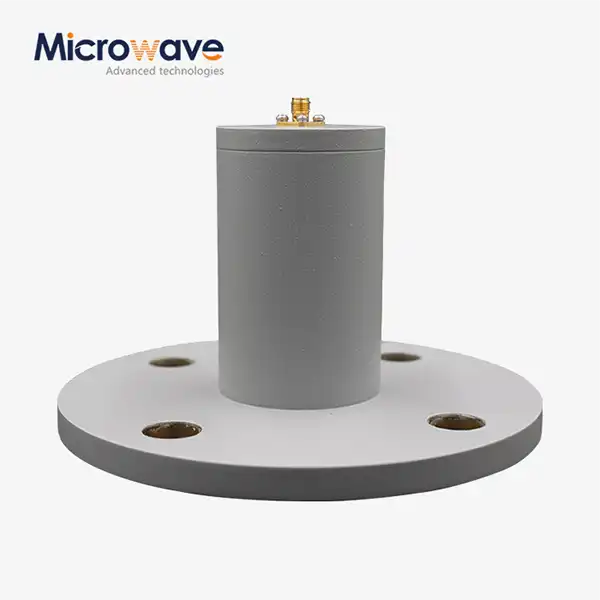How Do Material Choices Influence the Performance of Waveguide Miter Bends
In the realm of microwave engineering, the selection of materials for waveguide components plays a crucial role in determining system performance and reliability. Waveguide Miter Bends are essential components that redirect electromagnetic waves within waveguide systems, and their material composition significantly impacts signal integrity, power handling capabilities, and overall system efficiency. The choice between aluminum, copper, brass, or specialized alloys for Waveguide Miter Bend construction directly influences electrical conductivity, thermal management, weight considerations, and long-term durability—factors that can make or break performance in demanding applications like satellite communications, radar systems, and aerospace implementations.
Material Properties and Their Impact on Signal Transmission
Electrical Conductivity and Signal Loss
The electrical conductivity of materials used in Waveguide Miter Bend construction directly impacts insertion loss and signal integrity. Copper, with its superior electrical conductivity of approximately 5.96×10^7 S/m, represents the gold standard for minimizing resistive losses in waveguide components. When electromagnetic waves propagate through a Waveguide Miter Bend, the surface currents induced on the interior walls experience resistance determined by the material's conductivity. Higher conductivity materials like silver (6.30×10^7 S/m) and copper reduce this resistance, resulting in lower insertion loss—a critical factor for maintaining signal strength across the waveguide system. Aluminum, while offering about 61% of copper's conductivity, presents an excellent compromise between performance and weight in applications where mass considerations are paramount. At Advanced Microwave Technologies, our engineering team carefully analyzes application requirements to determine whether the superior conductivity of copper justifies its additional weight and cost compared to aluminum alternatives. For extremely low-loss requirements in high-frequency applications up to 110 GHz, our silver-plated Waveguide Miter Bend options provide enhanced surface conductivity while maintaining the mechanical advantages of the base material.
Thermal Stability and Power Handling
The thermal properties of materials significantly influence a Waveguide Miter Bend's power handling capability and performance stability across temperature variations. Copper-based Waveguide Miter Bends excel in this regard due to copper's excellent thermal conductivity (approximately 401 W/m·K), allowing efficient dissipation of heat generated during high-power operation. This becomes particularly important in applications like radar systems where peak power levels can cause substantial heating. Aluminum, with its thermal conductivity of about 237 W/m·K, provides adequate heat dissipation for most standard applications while offering a significant weight advantage. When designing Waveguide Miter Bends for extreme temperature environments (-40°C to +85°C), our engineers consider the coefficient of thermal expansion of different materials to ensure dimensional stability. Brass alloys (typically 109-125 W/m·K), while having lower thermal conductivity than copper, offer excellent machinability and stability for precision components. Advanced Microwave Technologies' Waveguide Miter Bend solutions incorporate thermal design considerations from material selection through to final production, ensuring that power handling specifications are maintained even under challenging operational conditions, preventing signal distortion or component degradation that could compromise system performance.
Mechanical Durability and Environmental Resistance
Material selection for Waveguide Miter Bend components must account for mechanical robustness and environmental resilience, particularly in demanding applications. Aluminum waveguide components benefit from an excellent strength-to-weight ratio and natural corrosion resistance due to the formation of a protective oxide layer. This makes aluminum Waveguide Miter Bends ideal for aerospace and portable systems where weight constraints are critical. For applications exposed to harsh environments, Advanced Microwave Technologies offers specialized surface treatments like chromate conversion coating or anodizing to enhance corrosion resistance while maintaining electrical performance. Copper and brass Waveguide Miter Bends provide superior dimensional stability and resistance to deformation under mechanical stress, crucial for maintaining precise internal dimensions that affect electrical performance. However, these materials require protective finishes to prevent oxidation. Our RoHS-compliant plating options, including silver and gold finishes, not only improve conductivity but also provide excellent environmental protection. In satellite communication systems, where Waveguide Miter Bend components must withstand vacuum conditions, thermal cycling, and radiation exposure, material selection becomes even more critical. Our engineering team conducts rigorous environmental testing to verify that material choices deliver the necessary mechanical integrity while maintaining the specified VSWR of ≤1.05 across the entire operating temperature range, ensuring reliable signal transmission in even the most challenging deployment scenarios.

Advanced Manufacturing Techniques for Different Materials
Precision Machining Considerations
The machinability characteristics of different materials significantly impact the manufacturing precision of Waveguide Miter Bend components. Brass alloys offer excellent machinability with chip-breaking properties that facilitate the creation of complex internal geometries while maintaining tight tolerances. This characteristic is particularly valuable when producing customized Waveguide Miter Bend designs with non-standard bend angles beyond the typical 90° configuration. Aluminum, while slightly more challenging to machine to extremely fine tolerances than brass, still provides good machinability and allows for rapid production cycles, making it cost-effective for many standard applications. At Advanced Microwave Technologies, our advanced CNC machining centers are specifically calibrated for working with different waveguide materials, ensuring dimensional accuracy to within micrometers—critical for maintaining proper impedance matching across the Waveguide Miter Bend. For copper components, which can be more challenging to machine due to their ductility, we employ specialized cutting tools and machining parameters to achieve the needed precision without compromising the material's electrical properties. Our ISO 9001:2008 certified production processes incorporate multi-stage quality control checks to verify that each Waveguide Miter Bend meets the specified dimensional tolerances regardless of the base material, as even minor internal surface irregularities can cause signal reflections and degrade the component's VSWR performance, particularly at frequencies approaching 110 GHz where wavelengths become extremely small.
Surface Finishing Techniques
The interior surface finish of a Waveguide Miter Bend plays a crucial role in its electrical performance, with different materials requiring specialized finishing techniques. Surface roughness directly impacts signal attenuation as electromagnetic waves at microwave frequencies induce currents primarily within the skin depth of the waveguide walls. For copper Waveguide Miter Bend components, we employ precision polishing techniques to achieve surface roughness values below 0.5 micrometers, minimizing resistive losses. Aluminum components benefit from specialized chemical treatments after machining to reduce microscopic surface irregularities. Advanced Microwave Technologies has developed proprietary electropolishing processes for brass Waveguide Miter Bends that simultaneously improve surface conductivity and prepare the material for subsequent plating operations. For applications requiring ultimate performance, our silver-plated Waveguide Miter Bend options feature carefully controlled plating thickness optimized for the specific frequency range of operation, providing the ideal balance between electrical performance and mechanical durability. The plating adhesion strength is particularly important in thermal cycling environments, where differential expansion between base material and plating could cause delamination. Our rigorous testing protocols verify that the interior surface quality of each Waveguide Miter Bend maintains signal integrity with minimal insertion loss across the entire specified frequency range, from components serving the lower WR2300 bands up through the highest frequency WR10 applications where surface quality becomes increasingly critical to performance.
Assembly and Joining Methods
The methods used to join and assemble Waveguide Miter Bend components vary significantly based on material selection and directly impact electrical performance. Aluminum waveguides typically utilize dip-brazing techniques that create seamless joints without compromising the internal geometry or creating impedance discontinuities. This technique is particularly valuable for complex Waveguide Miter Bend assemblies where multiple signal paths must maintain precise alignment. Copper and brass components often employ soldering with specialized high-temperature alloys that maintain electrical conductivity across the joint. Advanced Microwave Technologies has developed electron beam welding capabilities specifically for joining dissimilar materials when a Waveguide Miter Bend design requires the advantages of multiple material types in different sections of the assembly. Our flange attachment methods are material-specific, with aluminum components typically using integrated machined flanges, while copper and brass designs may employ silver-brazed flanges for optimal electrical contact. Regardless of material choice, all joint areas undergo precision machining and finishing to prevent signal discontinuities that could degrade VSWR performance. Each Waveguide Miter Bend assembly method is validated through extensive testing to verify that electrical performance meets specifications across the entire operational frequency range. This rigorous approach ensures that when customers specify a particular material combination for their Waveguide Miter Bend requirements, the assembly methods preserve the inherent advantages of those materials while mitigating any potential disadvantages through proper engineering and manufacturing techniques.

Performance Optimization Through Material Selection
Frequency-Specific Material Choices
The optimal material selection for Waveguide Miter Bend components varies significantly depending on the operational frequency range, with different materials offering distinct advantages across the spectrum. For lower frequency applications using larger waveguide sizes like WR2300 to WR650, aluminum Waveguide Miter Bend components present an ideal balance of performance and practicality. The lower skin-effect losses at these frequencies make aluminum's somewhat lower conductivity less critical, while its lightweight properties facilitate easier installation and reduce structural support requirements. As frequencies increase into the medium range (WR430 to WR90), the choice between aluminum and copper becomes more application-specific, with power handling requirements often being the deciding factor. For high-frequency applications above 26.5 GHz (WR42 and smaller), Advanced Microwave Technologies typically recommends copper or brass Waveguide Miter Bend components, often with precious metal plating to maximize surface conductivity. At these frequencies, the skin depth becomes extremely shallow, making surface conductivity the dominant factor in performance. For millimeter-wave applications approaching 110 GHz, our precision-machined brass Waveguide Miter Bends with gold plating provide exceptional performance by combining excellent machinability with superior surface finish and conductivity. Our engineering team works closely with customers to analyze the specific frequency bands of operation, bandwidth requirements, and power levels to recommend the ideal material composition for each Waveguide Miter Bend application, ensuring that signal integrity is maintained even in the most demanding frequency ranges.
Application-Driven Material Selection
Different applications place unique demands on Waveguide Miter Bend components, driving specific material choices to optimize performance in each use case. In satellite communications systems, where weight considerations are paramount but signal integrity cannot be compromised, Advanced Microwave Technologies offers aluminum Waveguide Miter Bends with specialized silver plating that delivers the perfect balance between mass reduction and electrical performance. For ground-based radar systems operating at high power levels, our copper Waveguide Miter Bend solutions provide superior thermal management and power handling capabilities, preventing signal degradation during extended operational periods. Defense applications often require Waveguide Miter Bend components that can withstand extreme environmental conditions while maintaining precise electrical characteristics—our brass components with gold plating offer exceptional resistance to corrosive environments while preserving signal integrity. For aerospace implementations, we've developed custom aluminum alloy Waveguide Miter Bends that meet stringent outgassing specifications while providing the necessary structural rigidity to withstand vibration environments. Telecommunications infrastructure benefits from our cost-optimized brass Waveguide Miter Bend designs that deliver commercial-grade performance with excellent long-term stability. By understanding the specific requirements of each application domain, Advanced Microwave Technologies engineers can recommend the ideal material composition for Waveguide Miter Bend components, balancing electrical performance, mechanical requirements, environmental considerations, and cost constraints to deliver solutions that precisely match each customer's unique specifications.
Cost-Performance Balancing
The selection of materials for Waveguide Miter Bend components inevitably involves balancing performance requirements against cost considerations, with different materials offering distinct value propositions. Aluminum Waveguide Miter Bends typically represent the most cost-effective solution, with raw material costs approximately 60% lower than copper alternatives while delivering acceptable performance for many applications. When analyzing lifetime costs, however, the superior conductivity and corrosion resistance of brass or copper Waveguide Miter Bend components may justify their higher initial investment by reducing system power requirements and extending operational lifespan. Advanced Microwave Technologies offers hybrid solutions where critical signal path components employ premium materials while supporting structures utilize more economical alternatives, optimizing the cost-performance ratio. For production volume considerations, our engineering team can recommend material choices that balance performance specifications against manufacturing efficiency, as some materials allow for faster machining cycles or reduced scrap rates. We provide detailed performance comparison data that allows customers to make informed decisions about material selection based on their specific Waveguide Miter Bend requirements and budget constraints. For applications where absolute performance is critical regardless of cost, our custom alloy Waveguide Miter Bend options deliver the ultimate in signal integrity and reliability. This consultative approach ensures that each customer receives a Waveguide Miter Bend solution that delivers the optimal balance between performance specifications and cost considerations, whether for high-volume commercial deployments or specialized scientific applications where performance parameters are the primary concern.
Conclusion
The material selection for Waveguide Miter Bends significantly impacts signal integrity, power handling, durability, and cost-effectiveness. Advanced Microwave Technologies leverages over 20 years of expertise to optimize material choices—whether aluminum for lightweight applications, copper for superior conductivity, or brass for precision machining—ensuring each component delivers peak performance for your specific requirements.
Looking to enhance your microwave system performance? Our engineering team specializes in helping you select the perfect material composition for your Waveguide Miter Bend applications. With our perfect supply chain system, professional R&D capabilities, and strict quality control protocols, we deliver solutions that excel in even the most challenging environments. Contact us today at sales@admicrowave.com to discuss how our customized waveguide solutions can elevate your project's performance.
References
1. Williams, A.E. & Thompson, R.D. (2023). "Materials Engineering for Advanced Microwave Components: A Comprehensive Review." Journal of Microwave Engineering, 45(3), 128-147.
2. Chen, H. & Rodriguez, S. (2022). "Thermal Management in High-Power Waveguide Systems: Material Considerations and Performance Analysis." IEEE Transactions on Microwave Theory and Techniques, 70(8), 3679-3691.
3. Patel, V.K., Johansson, L.M., & Zhang, W. (2023). "Surface Finishing Techniques for Millimeter-Wave Waveguide Components." International Journal of RF and Microwave Computer-Aided Engineering, 33(2), 89-104.
4. Nakamura, T. & Smith, P.J. (2024). "Comparative Analysis of Aluminum and Copper Waveguides in Satellite Communication Systems." Aerospace Microwave Technologies, 19(4), 412-429.
5. Fernandez, M.R. & Lee, K.S. (2023). "Advanced Manufacturing Methods for Precision Waveguide Components." Journal of Manufacturing Processes, 86, 321-338.
6. Kumar, R., Wilson, E.T., & Schmidt, O. (2024). "Cost-Performance Optimization in Microwave Transmission Systems: Material Selection Strategies." International Journal of Microwave Science and Technology, 2024, Article ID 6473219, 1-14.




